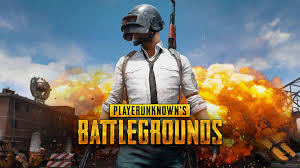See all of my
movie reviews.
Lady Bird: Greta Gerwig's first outing as a director is a smashing success. I have complicated feelings about Greta, in that I admire her intentions in writing and playing in quirky comedies, such as
Frances Ha. However, I felt that her movies were not quite there yet, not quite jelled. The characters were too unrelatable, and the plots too chaotic and off-putting. This is the first one she really gets right.
Christine is a teenager who calls herself "Lady Bird" for no discernible reason. The movie is basically an arc in the life of Christine and her relationship with her mother as she navigates the last year of high school in Sacramento. She makes and loses friends, fights, makes up, and fights with her mother, and tries to get into a college on the East Coast that will get her far away from her family.
I have been a big fan of Saoirse Ronan, from
Atonement to
Hanna to
Brooklyn. She and Laurie Metcalf, as well as the rest of the cast, give perfect performances. If there is any flaw to the movie it is that it could have been more: more sweeping, maybe have another deep relationship arc in addition to the main one. But that's hardly a flaw. Worth watching.
The Post: Hanks, Streep, and Spielberg give us another newspaper drama, this one about the publishing of the Pentagon Papers that broke the story about how a series of US presidents and higher ups were all lying about the Vietnam War, pretending that the US was fighting to liberate South Vietnam when they knew all along that the war could not be won and the real aim was to broadly fight China.
It's a good movie, if not a great one. Roughly on par with other newspaper movies I've seen, including
Spotlight and
All the President's Men., but with a narrower aim. The main conflicts are a) publish or not? and b) can Streep's female character assert authority at the paper without making a major blunder? Streep plays the owner of the Washington Post, a position she inherited from her late husband, and a woman bullied by her all male board. She is seemingly willing to let them bully her until she finally takes a stand. Hanks plays the chief editor who is pushing to report a story while the government wants to sue them for espionage.
If you happen to draw a parallel between the historic ideals of freedom of press versus a tyrannical, corrupt president and anything happening today it's because we once trumpeted these ideals very clearly. Reality has a bias toward the truth, which any amount of modern obfuscation cannot truly suppress. And it is good not to lose sight of the ideals for which we stand.
Molly's Game: If it's been a while since you've seen a Sorkin picture, you'll find it is like riding a bicycle. You will immediately be expecting to see Josh Lyman or Sam Seaborne walk in from some corner of the screen.
This is the story of a woman who uses some incredible insight, people skills, and brass balls to end up running a high stakes poker game for important celebrities and executives, first on the West Coast and then on the East. The enterprise lasts until the feds and the mafia move in on her. The story is told from a series of flashbacks interspersed with her finding a lawyer and navigating her legal case. It is based on a true story.
Jessica Chastain does a fine job in the lead role. Everyone else does fine, except Kevin Costner who seems out of place as her often distant but high pressuring father. Regardless, it is a Sorkin story, which means witty, clever, entertaining dialog and characters who are ten times brighter and more accomplished than most people you will ever meet. Well crafted with great cinematography.
Goodbye Christopher Robin: The story of A.A. Milne, his wife, and his son Christopher Robin, how the Winnie the Pooh books came to be, and the effect they had on their lives. Spoiler: on the one hand the books are the most successful children's books of all time. On the other hand, they destroyed the life of Christopher Robin and his relationship with his parents. The movie actually gives us a slightly happier ending than the real life events.
Milne's wife is shown to be a bit of a shrew, with just enough redeeming moments to make her two-dimensional, but not really likable. Alan Milne is more sympathetic, although he blatantly and blindly uses his son poorly without much thought. It's all pretty tragic.
It's a decent movie for what it aims to be, somewhere on the same level as
Becoming Jane or
Miss Potter. It is well acted and lovingly directed and filmed. It tells its story well enough. But it's not a very important story or movie, for all that, and only the falsified, slightly happier ending gives the viewer any kind of comfort.
Westworld (season one): I saw a few episodes of
Humans and couldn't get into it. I was a little concerned about the level of violence I heard about in this series (I won't watch
Game of Thrones). Somehow, the fact that the violence happens to robots makes it easier to take, although the question remains exactly whether the robots are or are not conscious, so you have to decide that for yourself if the violence is watchable or not.
I am a huge fan of Evan Rachel Wood; she and everyone else do fine jobs. Unlike Humans, the stories are quite captivating, with a number of whodunits and what's going to happen nexts that got me hooked. The stories take place in the facility that creates and maintains the robots, as well as in the play world of Westworld, and they include scenes that occur as flashbacks from the robots' perspective, despite the fact that the robots are not supposed to have memories.
There is nudity, but respectfully done and never gratuitous. The sex scenes are all pretty unsexy.
The Marvelous Mrs. Maisel (season one): The next series from Amy Sherman Palladino (Gilmore Girls, Bunheads), this one succeeds better than Bunheads did. Bunheads had a few great scenes, but it was too unrestrained in ridiculous plot and ridiculous dialog, which made it hard to relate to. This series only has one Bunheads-style conversation that set my teeth on edge in episode two. Thankfully that was the only one.
Midge is a perfect 1950s Jewish housewife who is supported by her husband and who in turn supports his occasional forays into standup comedy. He's not good at it, and one day he decides that she is not supportive enough of him and he leaves her. She then discovers, albeit reluctantly, that SHE is good at comedy. Cue a lot of denial, drinking binges, and attempts to make a go at standup comedy, all the while continuing to navigate her 1950s Jewish family, neighbors, friends, children, and still husband, all of whom remain blissfully unaware of her secret life as a comedienne.
It's not as good as Gilmore Girls, which had the great triple relationships between the three women, as well as their suitors, husbands, and the funky Connecticut town Stars Hollow as color. The supporting characters here are not as fun, there is no funky community background. But we have a few great scenes with a young Lenny Bruce. The best scenes are the ones where she does her Lenny Bruce style-standup, something which could not really have happened in the time period of the show, and so represents a kind of wish fulfillment on the part of Amy and for the viewers.
Amy's dialog is distinctive, and it's fun to hear. I just wish the show also had a teenage daughter.




















































